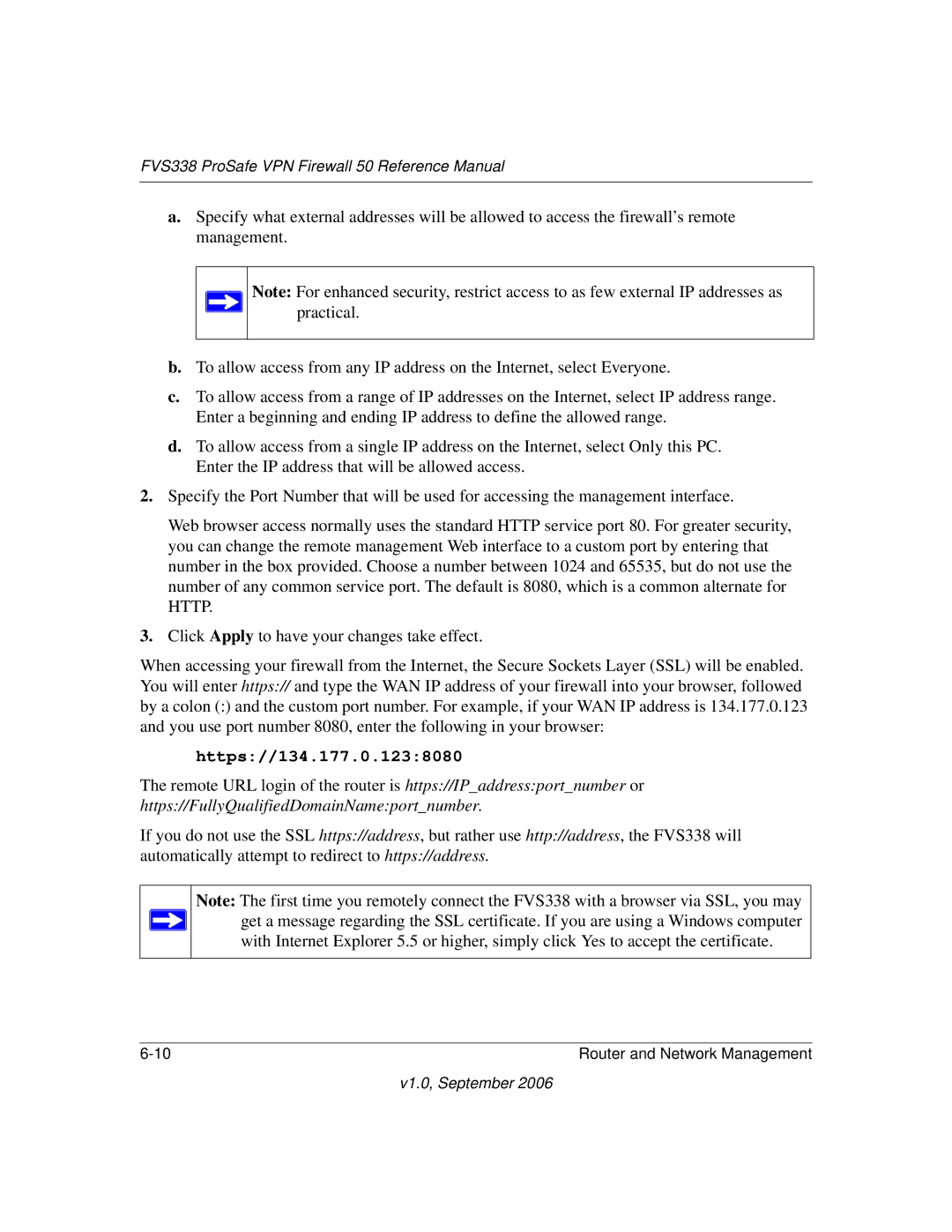
FVS338 ProSafe VPN Firewall 50 Reference Manual
a.Specify what external addresses will be allowed to access the firewall’s remote management.
Note: For enhanced security, restrict access to as few external IP addresses as practical.
b.To allow access from any IP address on the Internet, select Everyone.
c.To allow access from a range of IP addresses on the Internet, select IP address range. Enter a beginning and ending IP address to define the allowed range.
d.To allow access from a single IP address on the Internet, select Only this PC. Enter the IP address that will be allowed access.
2.Specify the Port Number that will be used for accessing the management interface.
Web browser access normally uses the standard HTTP service port 80. For greater security, you can change the remote management Web interface to a custom port by entering that number in the box provided. Choose a number between 1024 and 65535, but do not use the number of any common service port. The default is 8080, which is a common alternate for HTTP.
3.Click Apply to have your changes take effect.
When accessing your firewall from the Internet, the Secure Sockets Layer (SSL) will be enabled. You will enter https:// and type the WAN IP address of your firewall into your browser, followed by a colon (:) and the custom port number. For example, if your WAN IP address is 134.177.0.123 and you use port number 8080, enter the following in your browser:
https://134.177.0.123:8080
The remote URL login of the router is https://IP_address:port_number or https://FullyQualifiedDomainName:port_number.
If you do not use the SSL https://address, but rather use http://address, the FVS338 will automatically attempt to redirect to https://address.
Note: The first time you remotely connect the FVS338 with a browser via SSL, you may get a message regarding the SSL certificate. If you are using a Windows computer with Internet Explorer 5.5 or higher, simply click Yes to accept the certificate.
Router and Network Management |
